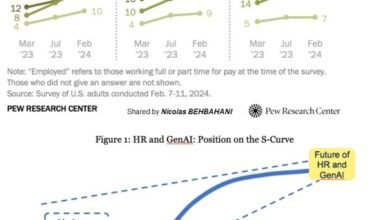
By | Abhijit Bhaduri |Keynote speaker, Author and Columnist
If someone looked at your search history, what would they learn about you? Quite a lot, I would say. Imagine what we could learn by going through the search history of an entire country for a year. That is what you could infer from Google’s Year in Search 2020 report for India.
Millions online for the first time
India leapfrogged from the television to the mobile directly and skipped the desktop altogether. When rural India goes online today they will start with 4G and in some cases 5G.
The next billion is online and they are different from the urban Indians. There are 700mn Indians online, making it second only to China. The number of smartphone users in India was estimated to reach over 760 million in 2021. India makes up 20% of the 3.8 billion smartphones worldwide. That combined with cheap data and the digital infrastructure created by the India Stack is a powerful trigger.
A multi-generation internet
Just like multiple generations in the workplace, the virtual world will also see multiple generations. Expect to see the generation gap to be even wider on the internet because Gen Z on the internet will not be the English speaking user. It will be someone who is far more tuned to the local issues and world around him or her. A billion new users will force the net to be more inclusive.
The next billion will start with 5G and not the dial-up modem. They will be the Gen Z of the Internet. Guess who will be Gen X ...
When ‘Jiography’ created history
Indians used about 12 GB data per month on an average in 2019, the highest consumption globally, and this is expected to rise even further to about 25 GB (gigabytes) per month by 2025, driven by affordable mobile broadband services and changing video viewing habits. There are two inflection points in the digital transformation of India.
- In 2017, when Jio entered the market, the data prices dropped to make it the cheapest in the world. There are rumours of Jio (in partnership with Google) launching an affordable 5G friendly Android smartphone next year.
- The second inflection point was in 2020 when the daily “heavy internet users” increased by 42%. That is the acceleration that was triggered by the pandemic.
Trends in usage are changing
In Jan 2018, I had written about the 3Vs that would drive usage patterns in India with a huge rural population going online. The three Vs I had identified were Video, Visuals and Voice. Read more
Google’s report also mentions “3Vs” – Voice, Video and Vernacular that are shaping the online behavior of Indians.
1. Voice is the preferred way
Humans can speak 150 words per minute but only type 40 words per minute. Video makes content consumption easy. It bypasses the need for literacy and brings more people, especially older people, online.
India has 22 official languages. Currently as many as 780 languages and 86 scripts are used in the country. That is why natural language processing will drive adoption among the next billion everywhere.
Voice and the workplace
- Voice search for accessing information is efficient. Imagine being able to ask, “How many employees have gone through an Effective People Manager certification?”
- Use drop-in audio (like Clubhouse) to help employees build networks across their organisation. Encourage senior leaders to hold audio-only town halls to encourage candid questions where employees cannot be tracked when they ask awkward questions
2. Learn and earn by using video
In 2020, Indians used video extensively during the lockdown to learn new skills and acquire certifications online. Video became the default option to learn and grow in the current role or to future-proof careers.
Video in the workplace
- Let employees build “How To” videos to help their peers build skills. Incentivise the employees who are popular content creators based on assessments the learners take.
- Use videos as an employer branding tool. Most leaders are the last to know the YouTube stars who are working in uninspiring jobs in the organisation. A talent hunt could unearth these creators.
- Encourage experts in the organisation to “livestream” their work as a way of building skills and inspiring others.
3. Vernacular content is the killer app
In 2020, a staggering 17 billion web pages were translated from English to Indic languages. An astonishing 84% online video viewers want NON-ENGLISH videos. This is the biggest opportunity to be used in the workplace to educate, inform and engage the employees.
Leverage vernacular content to connect at work
- Create vernacular content to build skills and upskill the workforce.
- Encourage leaders to conduct town halls in the local language. When leaders attempt to communicate in the local language (even when they make errors), they build deeper emotional connections with the teams.
- Encourage employees to share voice notes and short videos when they communicate with each other. Sending a voice note is faster and more impactful than writing a mail.
Seamlessly move between online and offline
The pandemic accelerated digital adoption in a big way across India. People are now willing to go online for goods and services they have never consumed/ tried online. From education, beauty tips, recipes, hobbies and even healthcare, Indians tried everything online.
The customer journey has moved online – from Brand Discovery to Comparison Shopping, Purchase and Payments, the consumers even in non Metro towns have gone online. There is a 45% increase in online shopping for rural India. The customers have discovered the convenience of doorstep delivery for everything. People are buying two-wheelers and four-wheelers online and are happy to test drive the car at home. The conclusion is obvious: doorstep delivery will be the default option. This will drive opportunities for companies offering last mile delivery. Logistics will become a prime shaper of the customer experience.
While most businesses try to focus on the consumer journey during digital transformation, the smarter option is to make the employee journey first go digital. Not only does it improve the employee experience, it will also help improve the candidate experience and customer experience as the organisation adopts digital transformation.
It is the moment Incredible India has been waiting for.
Read the Year in Search 2020 for India
==========
What are the implications of these trends for your organisation? What will be the impact on career opportunities for rural India? Do leave your comments below.
Republished with permission and originally published at Abhijit Bhaduri’s LinkedIn











